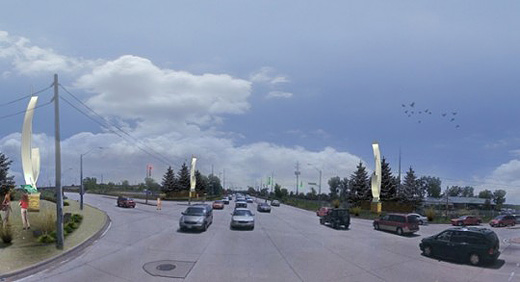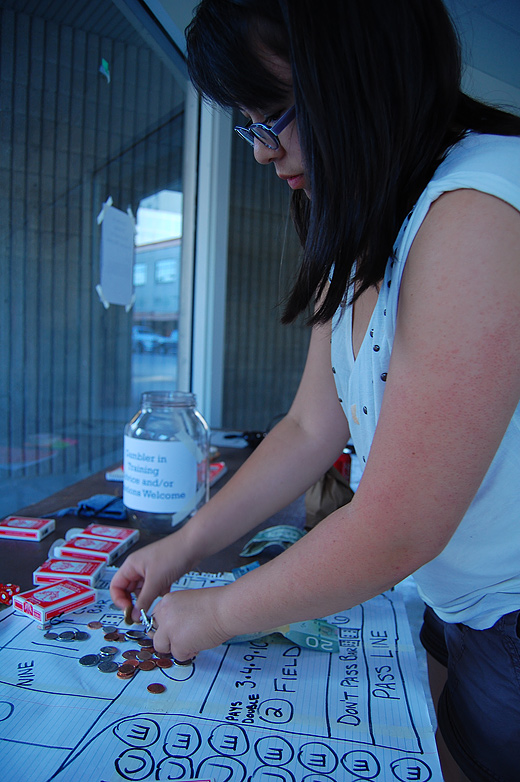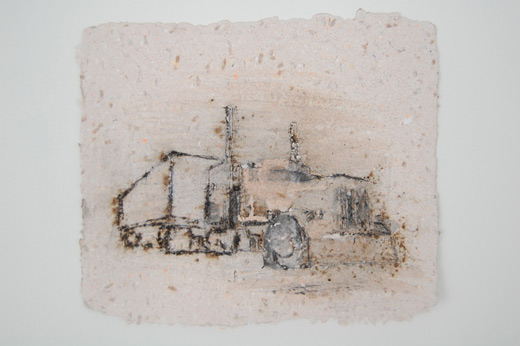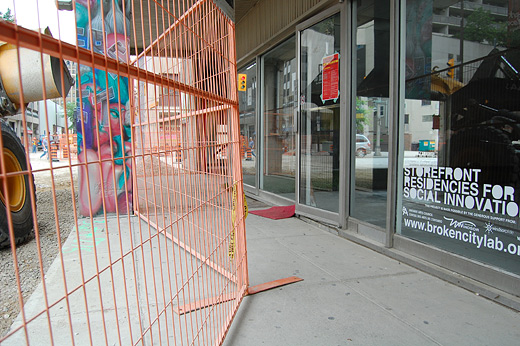Another incredible look back at SRSI from 2010, this time featuring Andrea Carvalho‘s work on non-places. Daragh Sankey continues to amaze us with these micro-documents … can’t wait to see what’s next!
Here’s the overview from In Store:
Chappas
We also saw this neighbourhood in The Border – the new-looking houses that Lee’s group explores, right on the edge of the wilderness, are right down the street from the Chappas houses that Simon (of DoUC fame) and Andrea find flowers in.
The area is vacant because the government bought up all the property. (Here is an example document given to landowners) The whole region lies in the path of the Detroit River International Crossing, the government’s new bridge to Detroit, just approved by PM Harper in June. Part of the project is to extend the 401 right to the bridge, so a huge swath of Windsor around Huron Church has been vacant for some time.
The first time I drove into Windsor I drove through this area and the visual impact was powerful. Only later did I hear about the DRIC, and the impact was dulled somewhat: just as on Indian Road (film coming soon!), the houses and stores were sold by the owners for good money, not abandoned due to economic hardship.
Upon further reflection though, there is a different kind of hardship at play. These giant transportation projects, cutting as they do through great swaths of the city, indicate that Windsor is valued more as a place to pass through than a place to live. “Canada’s busiest border crossing” is too powerful a thing; the gardens of Chappas, as they are in its way, cannot hope to stand.
Non-place
Andrea talked about this concept a lot. To quote:
Marc Augé coined the term non-lieux [non-places] to describe specific kinds of spaces, chiefly architectural and technological, designed to be passed through or consumed rather than appropriated, and retaining little or no trace of our engagement with them. These spaces, principally associated with transit and communication, are for Augé the defining characteristics of the contemporary period he calls ‘supermodernity,’ the product and agent of a contemporary crisis in social relations and consequently in the construction of individual identities through such relations.
The parking lot we see at the beginning of this film is a non-place. The vacant lot in which Andrea and Simon placed the flowers was a non-place, but by their action, dropped the non-. Maybe many more actions like that could cumulatively do the same for Windsor as a whole.
Here’s the original Andrea video from SRSI, for what it’s worth: SRSI – Andrea Carvalho.





